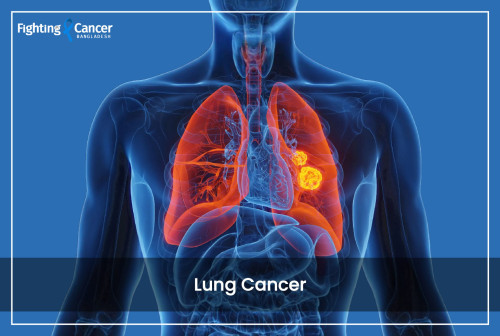
Lung cancer may start either in the bronchus or other parts of the lung. Later, it may spread to lymph nodes, the brain, or other parts of the body, and cancers from other organs may also spread to the lung. Lung cancer is mainly two types: small-cell lung cancer and non-small-cell lung cancer. Small cell lung cancer has two types: small cell carcinoma (oat cell cancer) and combined small cell carcinoma. Non-small cell lung cancer can be of three types, adenocarcinoma, squamous cell carcinoma, and large cell carcinoma.
Statistics
Lung cancer is more prevalent among older people, and the average age of affected people is 75 years. It is very rare in people aged below 40 years.
Risk factors and symptoms
- Smoking
- Previous radiation therapy
- Exposure to secondary smoke
- Exposure to certain chemicals like asbestos
- Exposure to radon gas
- Family history
Symptoms include persistent cough, blood in cough or spit, chest pain, difficulty breathing, unintentional weight loss, hoarseness, headache, and bone pain.
Prevention
Avoid both smoking and secondary smoke, a healthy diet, avoid radon exposure, and physical exercise—these may help you to prevent lung cancer.
Treatment
Based on the patient's conditions, these treatments are recommended: surgery (wedge resection, segmental resection, lobectomy, pneumonectomy), stereotactic body radiotherapy, radiation therapy (X-ray, proton), immunotherapy, targeted drug therapy, chemotherapy, and palliative care.

